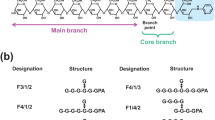Abstract
Carnosine (β-alanyl-l-histidine) is one of the bioactive dipeptides and has antioxidant, antiglycation, and cytoplasmic buffering properties. In this study, to synthesize carnosine from nonprotected amino acids as substrates, we cloned the carnosinase (CN1) gene and constructed a whole-cell biocatalyst displaying CN1 on the yeast cell surface with α-agglutinin as the anchor protein. The display of CN1 was confirmed by immunofluorescent labeling, and CN1-displaying yeast cells showed hydrolytic activity for carnosine. When carnosine was synthesized by the reverse reaction of CN1, organic solvents were added to the reaction mixture to reduce the water content. The CN1-displaying yeast cells were lyophilized and examined for organic solvent tolerance. Results showed that the CN1-displaying yeast cells retained their original hydrolytic activity in hydrophobic organic solvents. In the hydrophobic organic solvents and hydrophobic ionic liquids, the CN1-displaying yeast cells catalyzed carnosine synthesis, and carnosine was synthesized from nonprotected amino acids in only one step. The results of this research suggest that the whole-cell biocatalyst displaying CN1 on the yeast cell surface can be used to synthesize carnosine with ease and convenience.





Similar content being viewed by others
References
Abe H (2000) Role of histidine-related compounds as intracellular proton buffering constituents in vertebrate muscle. Biochemistry (Mosc) 65:757–765
Baran EJ (2000) Metal complexes of carnosine. Biochemistry (Mosc) 65:789–797
Eker B, Asuri P, Murugesan S, Linhardt RJ, Dordick JS (2007) Enzyme-carbon nanotube conjugates in room-temperature ionic liquids. Appl Biochem Biotechnol 143:153–163
Heck T, Kohler HP, Limbach M, Flögel O, Seebach D, Geueke B (2007) Enzyme-catalyzed formation of β-peptides: β-peptidyl aminopeptidases BapA and DmpA acting as β-peptide-synthesizing enzymes. Chem Biodivers 4:2016–2030
Hipkiss AR (1998) Glycation, ageing and carnosine: are carnivorous diets beneficial? Int J Biochem Cell Biol 30:863–868
Hopp TP, Prickett KS, Price VL, Libby RT, March CJ, Cerretti DP, Urdal DL, Conlon PJ (1988) A short polypeptide marker sequence useful for recombinant protein identification and purification. Biotechnology 6:1204–1210
Horinishi H, Grillo M, Margolis FL (1978) Purification and characterization of carnosine synthetase from mouse olfactory bulbs. J Neurochem 31:909–919
Klibanov AM (2001) Improving enzymes by using them in organic solvents. Nature 409:241–246
Kuroda K, Matsui K, Higuchi S, Kotaka A, Sahara H, Hata Y, Ueda M (2009) Enhancement of display efficiency in yeast display system by vector engineering and gene disruption. Appl Microbiol Biotechnol 82:713–719
Laane C, Boeren S, Vos K, Veeger C (1987) Rules for optimization of biocatalysis in organic solvents. Biotechnol Bioeng 30:81–87
Li SJ, Zhao Y, Huang YB, Gao G, Zhang DH, Xu L, Li G, Zhang XZ (2008) Synthesis of a precursor dipeptide of thymopentin in organic solvents by an enzymatic method. Prep Biochem Biotechnol 38:158–171
Mannion AF, Lakeman PM, Dunnett M, Harris RC, Willan PL (1992) Carnosine and anserine concentrations in the quadriceps femoris muscle of healthy humans. Eur J Appl Physiol 64:47–50
McFarland GA, Holliday R (1994) Retardation of the senescence of cultured human diploid fibroblasts by carnosine. Exp Cell Res 167:175–184
Micaêlo NM, Soares CM (2007) Modeling hydration mechanisms of enzymes in nonpolar and polar organic solvents. FEBS J 274:2424–2436
Nakashima K, Maruyama T, Kamiya N, Goto M (2005) Comb-shaped poly(ethylene glycol)-modified subtilisin Carlsberg is soluble and highly active in ionic liquids. Chem Commun (Camb) 34:4297–4299
Quinn P, Boldyrev A, Formazuyk V (1992) Carnosine: its properties, functions and potential therapeutic applications. Mol Aspects Med 13:379–444
Sanger F, Nicklen S, Coulson AR (1977) DNA sequencing with chain-terminating inhibitors. Proc Natl Acad Sci USA 74:5463–5467
Sekizaki H, Itoh K, Shibuya A, Toyota E, Kojoma M, Tanizawa K (2008) Trypsin-catalyzed synthesis of dipeptide containing α-aminoisobutylic acid using p- and m-(Amidinomethyl)phenyl esters as acyl donor. Chem Pharm Bull 56:688–691
Soetaert W, Vandamme E (2006) The impact of industrial biotechnology. Biotechnol J 1:756–769
Stottmeister U, Aurich A, Wilde H, Andersch J, Schmidt S, Sicker D (2005) White biotechnology for green chemistry: fermentative 2-oxocarboxylic acids as novel building blocks for subsequent chemical synthesis. J Ind Microbiol Biotech 32:651–664
Tabakman R, Lazarovici P, Kohen R (2002) Neuroprotective effects of carnosine and homocarnosine on pheochromocytoma PC12 cells exposed to ischemia. J Neurosci Res 68:463–469
Teufel M, Saudek V, Ledig JP, Bernhardt A, Boularand S, Carreau A, Cairns NJ, Carter C, Cowley DJ, Duverger D, Ganzhorn AJ, Guenet C, Heintzelmann B, Laucher V, Sauvage C, Smirnova T (2003) Sequence identification and characterization of human carnosinase and a closely related non-specific dipeptidase. J Biol Chem 278:6521–6531
Trombley PQ, Horning MS, Blakemore LJ (2000) Interactions between carnosine and zinc and copper: implications for neuromodulation and neuroprotection. Biochemistry (Mosc) 65:807–816
Voss S, Skerra A (1997) Mutagenesis of a flexible loop in streptavidin leads to higher affinity for the Strep-tag II peptide and improved performance in recombinant protein purification. Protein Eng 10:975–982
Welton T (1999) Room-temperature ionic liquids. Solvents for synthesis and catalysis. Chem Rev 99:2071–2084
Author information
Authors and Affiliations
Corresponding author
Rights and permissions
About this article
Cite this article
Inaba, C., Higuchi, S., Morisaka, H. et al. Synthesis of functional dipeptide carnosine from nonprotected amino acids using carnosinase-displaying yeast cells. Appl Microbiol Biotechnol 86, 1895–1902 (2010). https://doi.org/10.1007/s00253-009-2396-7
Received:
Revised:
Accepted:
Published:
Issue Date:
DOI: https://doi.org/10.1007/s00253-009-2396-7




